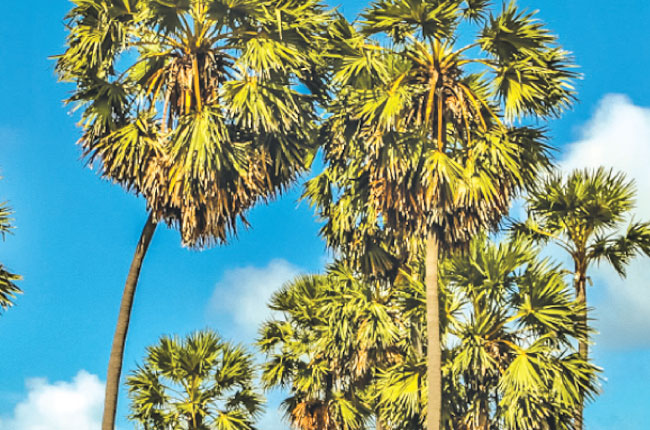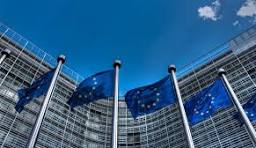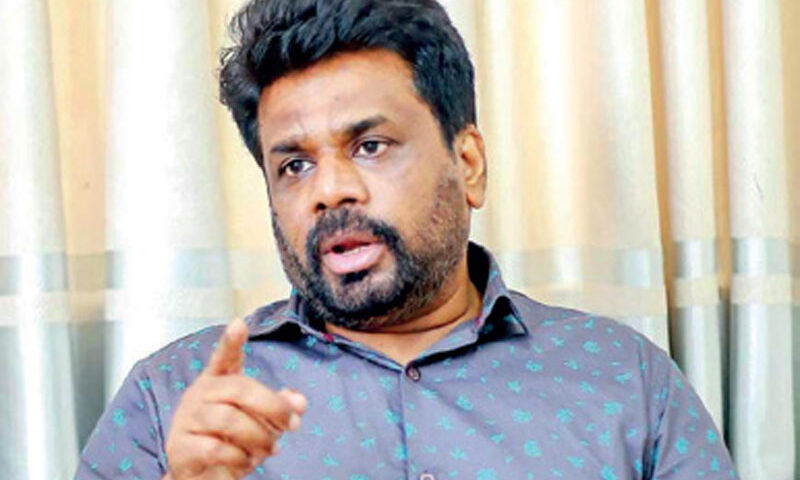Sri Lanka’s local elections are a major threat to the ruling class
(JAYADEVA UYANGODA | Feb 13, 2023)
Sri Lankans entered 2023 with an unwelcome gift from the government – a new income tax policy. This was meant to bolster empty public coffers as the government tries to navigate the country’s economic crisis, but for ordinary people already facing difficulty on every front it was one more blow from the same ruling class that created the mess in the first place. Already, triggered by the new tax policy, protests against the government by large numbers of middle-class professionals have become a regular occurrence. These protests have the potential to spread among other social strata too: the poor and working classes also feel mounting despair because of unrelenting economic hardship. In a situation where most of the burden of Sri Lanka’s economic recovery has been passed on to these social classes, a new wave of popular outrage against the ruling elites cannot be ruled out, and there is speculation that renewed citizens’ protests this year may well be more widespread and militant than those that shook the country in 2022.
Two themes dominate the political debate in Sri Lanka at present: managing the economic crisis through restructuring sovereign debt and the local government elections announced for March 2023. Debt restructuring talks have begun, but there is yet no concrete plan of action agreed upon between the government and its creditors, for two reasons. First is the delay of the Chinese and Indian governments in agreeing to join international private creditors at the negotiation table, and the resultant hold-up in IMF approval for Sri Lanka’s debt restructuring plan, which would unlock an IMF bailout. Despite the deadlock, the Sri Lankan government has already begun to implement key elements of an economic “recovery” programme that officials admit has been proposed by the IMF. The government and bureaucracy have embraced with shameless enthusiasm a new phase of neoliberal economic reforms, hoping to manage a crisis caused by the same brand of neoliberal policies implemented some years ago.
The overall political context is also characterised by a new polarisation of Sri Lankan society into two opposing camps – in one, the citizens who want more democracy, and in the other, political elites who want less, or no, democracy.
A key component of the IMF-inspired programme is the drastic increase in personal income taxes, targeting the professional class and medium-sized business owners. At the same time, charges for electricity, fuel, gas, water and telecommunication services are also being dramatically increased. What many people find most predatory is the subjection of individual incomes above LKR 125,000 per month to a tax rate starting at 6 percent. After a sharp slide against the US dollar, LKR 125,000 translates at present to less than USD 350. For larger incomes, the tax rate now stands as high as 36 percent. In view of the rising cost of living and exceedingly high inflation – the inflation rate has been well above 50 percent – many middle-class families are finding the new tax regime ruinous.
Most of those who have already joined the middle-class protests, many wearing black clothes and bands, are public-sector employees in higher income brackets – university academics, doctors, executives at the Central Bank and public corporations. This indicates a new phase of politicisation among previously affluent sections of society whose economic security has already been severely undermined by the prolonged economic crisis since 2020.
These are clear signs of a maturation of the material conditions for a social explosion, precipitated by the very policies designed to manage the ongoing economic crisis, insensitive to their devastating social consequences or political costs.
Another aragalaya?
Yet this year, like last year, there seems to be no possibility of meaningful democratic reforms, at least on the near horizon. Sri Lankan citizens protesting during last year’s aragalaya – literally, “struggle” – made their wish for such reforms powerfully clear. Their slogans demanded the immediate replacement of the old political class with a new one committed to a “new political culture” through a “system change”. The movement’s suspension in August did not mark any fulfilment of or end to these desires. Instead, Ranil Wickremesinghe, who replaced the ousted Gotabaya Rajapaksa as president, launched a counter-democratic backlash as soon as he assumed office. He branded the aragalaya activists “fascists” and “anarchists” out to destroy Sri Lanka’s parliamentary democracy, and used emergency laws and the draconian Prevention of Terrorism Act to crack down on protest sites and leaders.
The government’s attempts to subvert the Election Commission’s decision to hold local government elections on 9 March clearly demonstrates the de-democratising intentions of the Wickremesinghe–Rajapaksa ruling coalition.
Wickremesinghe quickly reconfirmed what Sri Lankans already knew – that he represents the old regime and belongs to the same discredited political class. The successor president established a tripartite power bloc to counter the challenge of the aragalaya as well as the threat of its return. This comprised the executive led by Wickremesinghe, the Parliament dominated by the Rajapaksa camp, and the national security establishment led by the defence secretary, a former army general. In short, Sri Lanka is witnessing the continuation of the old process of elite-led democratic backsliding. With no meaningful democratic reforms to be expected from the entrenched political elites, Sri Lanka’s prospects for getting out of the de-democratisation trap are in the hands of the demos, its non-elite citizens. Actuating those prospects requires the resurgence of the dormant citizens’ movement and its transformation from an activist platform into an organised political movement or political party, or perhaps parties, with a new programme of gaining power through electoral means.
Meanwhile, the government’s attempts to subvert the Election Commission’s decision to hold local government elections on 9 March clearly demonstrates the de-democratising intentions of the Wickremesinghe–Rajapaksa ruling coalition. To stall the vote, it has come up with the justification that the treasury does not have the funds to finance an election. The most likely result of the local elections, if they are held, would be the emergence of two opposition parties, the Samagi Jana Balawegaya and Janatha Vimukthi Peramuna, as voters’ leading choices. A simultaneous outcome would be an invariable drubbing for the two parties of the ruling coalition, Wickremesinghe’s United National Party and the Rajapaksas’ Sri Lanka Podujana Peramuna, formalising their severe loss of public trust and legitimacy. It might also mark the beginning of the end for the Wickremesinghe-Rajapaksa coalition government and the old ruling class they represent, allowing a shift in the political balance in favour of democratic reforms.

The negative attitude to local elections of Sri Lanka’s president and his allies indicates a deep anxiety among the ruling elites over the democratic political awakening of the aragalaya. The anxiety is well founded, considering its roots in Sri Lanka’s recent electoral history. Polls for provincial councils and local governments held before parliamentary or presidential elections have been trend-setters for national votes on at least two occasions, in 1993 and 2018.
In 1993, the UNP, after 15 years of iron-fisted rule, lost provincial council elections to the People’s Alliance, a new coalition of the Sri Lanka Freedom Party and small left parties. Led by Chandrika Bandaranaike Kumaratunga, later the president but then still a newcomer, this coalition attracted many voters tired of the UNP’s long, repressive and arbitrary reign. Parliamentary and presidential elections the following year saw easy victories for the People’s Alliance.
After decades of the country’s retreat from democracy, Sri Lankan citizens have now shown that democratisation from below is a tangible possibility.
In 2018, local government elections indicated a dramatic shift in the public mood in favour of a new opposition party led by Mahinda Rajapaksa, the Sri Lanka Podujana Peramuna. Similar to what happened in 1993, the opposition’s landslide victory in local polls set the trend for subsequent presidential and parliamentary elections, in this case held in 2019 and 2020, respectively. Wickremesinghe, then the prime minister, was himself a key victim of this and is not likely to have forgotten the lesson, especially with the next presidential election due in September 2024. It is against this backdrop that the Wickremesinghe government’s manoeuvrings to undermine local elections make political sense.
A volatile mix
This overall political context is also characterised by a new polarisation of Sri Lankan society into two opposing camps – in one, the citizens who want more democracy, and in the other, political elites who want less, or no, democracy. Those who have a stake in political stability in Sri Lanka continue to ask whether the country will be able to manage the present crisis without violence. Among those cautious about the possibility are foreign governments and diplomats, national and international journalists, human rights activists, donors and providers of economic assistance. Many of them are aware of the gravity of the Sri Lankan crisis and alert to the government’s capricious and non-consultative approach to crisis management. They may also not be unaware of the potentially explosive consequences of relying too much on the IMF’s prescribed economic reforms, which point to further devaluation of the local currency and big cuts to public spending, among other things.
There are at present three possible paths to violence erupting. The first is an aggressive reaction of the political elites to avert the risk of losing power, whether via elections or a resurgent citizens’ agitation demanding that the government resign. The ruling elites are backed by the national security establishment, and using state-legitimised violence to protect law and order and ‘democracy’ is a time-tested option in Sri Lanka’s politics.
Sri Lankan society has thus produced objective conditions for a great political change. What seems to be missing is the subjective factor – the social and political agency to transform the present crisis into a historical opportunity for change.
The second is an explosion of anti-minority violence, stage-managed by the elites, who know the efficacy of violent communalism as a political weapon. While the politics of toxic communalism is in retreat in Sri Lanka at present, its sudden return to serve the interests of right-wing political interests, as has happened in the past, cannot be ruled out. However, public participation in or support for communal violence does not seem an immediate possibility in contemporary Sri Lanka. Among the aragalaya’s positive changes to the political ethics of Sri Lankan society is a rise of civic consciousness over communal strife.
The third is the spread of social violence in the form of individual acts of crime, not related to any political agenda, as a consequence of increasing poverty and despair. The absence of state support to help the poorer sections of society survive under severe economic hardship has already produced the preconditions for such social violence. Here, there have been compounding trends at work since 2020. First, the Covid-19 pandemic gave rise to a new wave of impoverishment, or pauperisation, making the Sri Lankan poor even poorer. Then, a second wave was precipitated by the economic collapse across 2021 and 2022. It led to the collapse of employment, businesses, family incomes and living standards also among the middle strata of the middle class, and forced them to join the ranks of the poor.
A third wave, visible since the middle of last year, is the impoverishment of the professional classes, who had access to various social safety nets that earlier mitigated their distress. Now the crisis of foreign exchange, the collapse of the economy and the government’s predatory new income-tax regime threaten them with deprivation as well. While some belonging to these social classes have decided to go abroad to escape, many remain economically very vulnerable.
In search of an alternative
Sri Lankan society has thus produced objective conditions for a great political change. What seems to be missing is the subjective factor – the social and political agency to transform the present crisis into a historical opportunity for change. Unhindered neoliberal capitalism, the defining trait of Sri Lanka’s economy in recent decades, has completed its socially destructive reform mission. A socialist path forward is currently beyond the realm of possibility. Yet a social democratic-type alternative is what the objective conditions of Sri Lanka’s multi-faceted crisis demand.

Such an alternative should offer the people of Sri Lanka two vectors of hope. The first is a state-sponsored economic and social security programme to protect the working and middle classes as well as the poor from falling further into misery, and to enable them to survive till the economy recovers. This approach should also enable the poor and the vulnerable to participate in the recovery not as victims but rather as willing participants in building a new economic life. That is one way to address the massive social despair, discontent and anger caused by the protracted crisis.
The second vector of hope is deep democratisation. After decades of the country’s retreat from democracy, Sri Lankan citizens have now shown that democratisation from below is a tangible possibility. With the aragalaya, democratic hope has returned to popular politics. Deep democratisation entails two spheres of reform. The first is the strengthening of the liberal, procedural content of Sri Lanka’s democracy, with an emphasis on the rule of law, human rights, checks and balances, and universal civic and political rights. This should also address Sri Lanka’s present crisis of representative democracy, crushed under an autocratic presidential system. The second is the strengthening of the social content of democracy, enabling ordinary citizens to participate in the democratic process beyond the limits of liberal representative democracy, not constrained by the wishes of the political elites. This calls for re-imagining Sri Lankan democracy to fuse liberal, republican, social democratic, feminist and ethno-communitarian goals, and to forge a creative synthesis of representative, direct and participatory variants of democracy.
A new wave of popular outrage against the ruling elites cannot be ruled out, and there is speculation that renewed citizens’ protests this year may well be more widespread and militant than those that shook the country in 2022.
There is yet no political force in Sri Lanka ready to take up this challenge. The only party with the potential to be sensitive to this agenda is the Janatha Vimukthi Peramuna, with its left-nationalist and radical history. The JVP seems to be attracting a great deal of public attention and support, and if the local elections are held as scheduled it might even emerge as the party with the single highest number of votes in a split electoral outcome with no clear winner. Yet the JVP will have to be extremely cautious in the execution of any deep reform even if it then went on to win the parliamentary election, because the trajectories of Sri Lanka’s politics are defined only partially by the Sri Lankan people and their political representatives. What would be the role of global and regional powers in shaping the future of Sri Lanka? What kind of democracy or regime would be tolerable to them? Would they continue to back, in order to protect their geo-political interests, the same corrupt political elites who authored the present crisis?
Meanwhile, the reactivation of the aragalaya in a new and more viable form would be fundamental to keeping the political class in check and sustaining popular hopes for change. Sri Lanka’s present crisis is too serious to be left in the hands of the political class alone. Especially with local elections under threat, some re-enactment of 2022 would be welcome in 2023 too.


